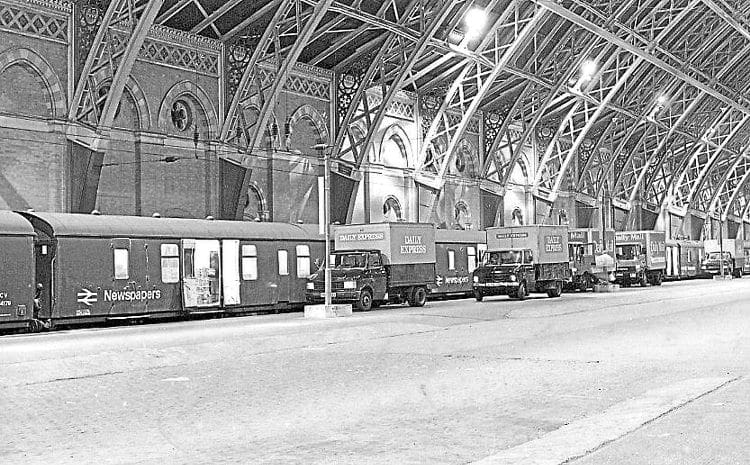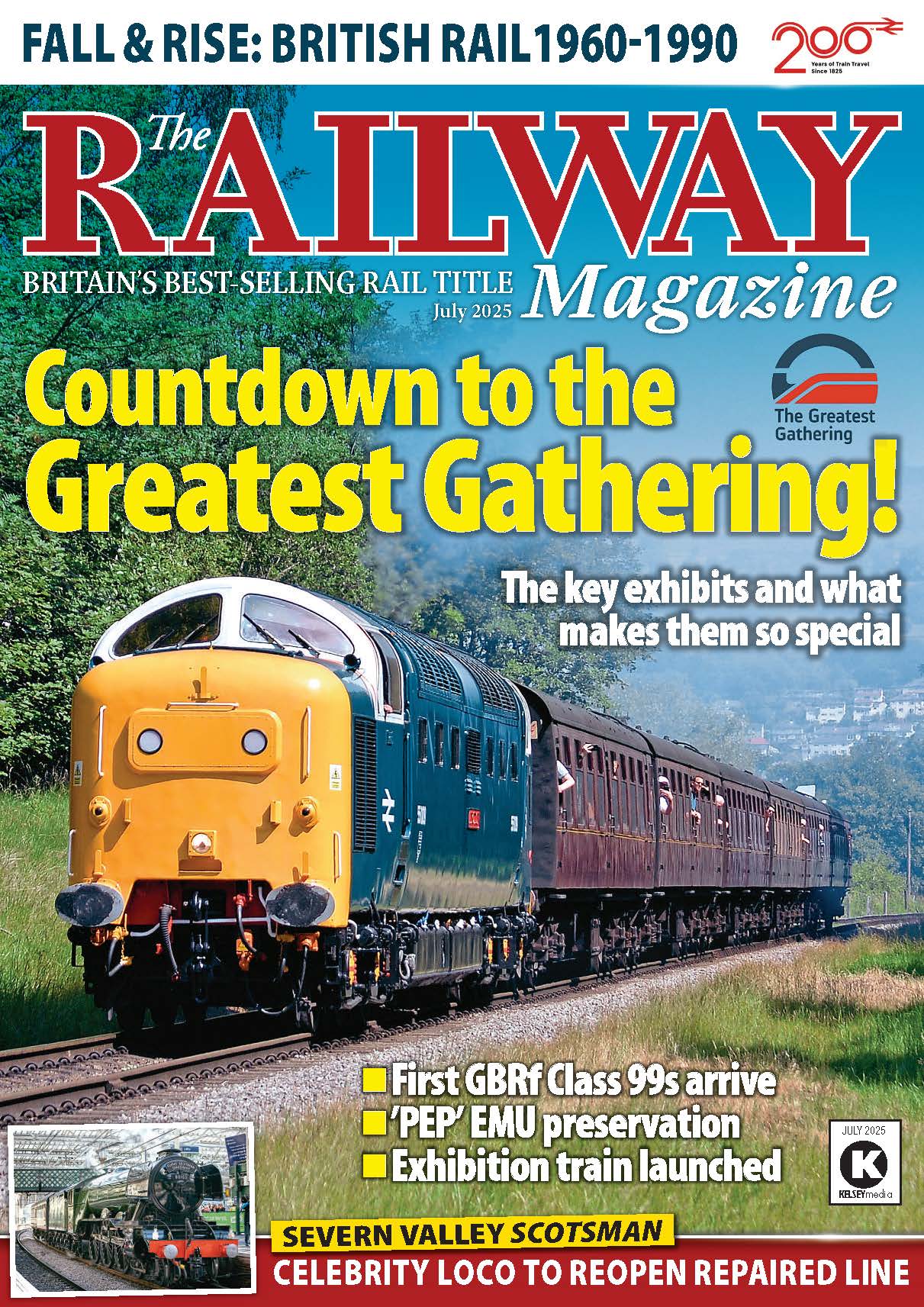Newspapers were carried on trains for a century and a half between the 1830s and the 1980s. Consultant editor Nick Pigott, who worked as a Fleet Street journalist for 13 years, tells the
little-known story of the overnight services that rushed the news from press to public.

ANYONE returning home by train from a late night in central London prior to the late-1980s will have seen them… large vans racing into the main rail termini, their tyres screeching as they turned the tight corners into the parcels platforms and sped towards the open doors of waiting trains.
On their sides were emblazoned in huge letters names such as Daily Express, Daily Mirror, The Times, The Guardian.
Monthly Subscription: Enjoy more Railway Magazine reading each month with free delivery to you door, and access to over 100 years in the archive, all for just £5.35 per month.
Click here to subscribe & save
Those were the days when the capital’s main line stations echoed to the frenzy and flurry of the nightly Fleet Street miracle – the production and distribution of millions of national newspapers to a population eager for the latest news.
Whisked hot off the presses, they would be packaged into large bundles, thrown into the backs of the vans and rushed to main stations such as Euston, St Pancras, Waterloo and Paddington.
Working at top speed in order not to miss the trains’ all-important departure times, teams of men would sling the bundles into special newspaper train carriages, some of which contained on-board staff whose job was to sort the bales into order en route in much the same way as Travelling Post Office train workers.
Sorted for distribution and affixed with the address labels of provincial wholesalers or newsagents, the papers would then be dropped off at the various stations along the line. In some small towns, it was not unknown for a bundle or two to be thrown onto the platform as the train sped through!
Read more in the March issue of The RM – out now!




